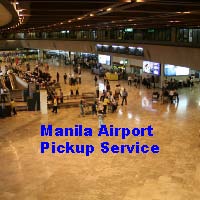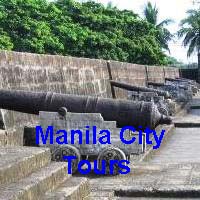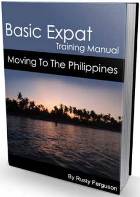Binondo pretty much everything is for sale.
Ah Binondo.
Like any other bustling economy around the world that is open to Chinese immigrants, every city and provincial capital around the Philippines has its share of Chinese chambers of commerce, Chinese schools and temples. Manila has its own Chinatown. That is Binondo, the centrally-located storefront to the adjacent Divisoria warehouse district, also Chinese-dominated. Together, the two comprise the heart of commerce in the Philippines.
That the enclave existed in the first place is testimony to the siege mentality of Spanish Manila and city planning the Americans did in their turn.
After arriving in the country in the 16th century, the Spaniards had to build a walled city to house the seat of government, churches, convent schools and residences for themselves. After all, Manila was under constant threat from envious Dutch, English, Portuguese, Chinese pirates and the odd Chinese rebellion or two.
From the very beginning, Chinese traders were shut out of the walled city. Having arrived with the sword in one hand and the cross in the other, the Spaniards strove hard to convert even the Chinese to Catholicism. The class-conscious Spaniards labbelled the local Chinese “Sangley” and those who would not convert were restricted to the Parian district, closer to the southern bank of the Pasig river but an easy stroll for
Intramuros residents shopping for the latest in porcelain, silk and jade. Even better, Parian was within cannon range of Intramuros, just in case any oppressed Chinese entertained thoughts of doing another Boxer Rebellion.
The converted Sangley’s, on the other hand, were given Binondo, across the river from Intramuros, to live in.

After the Americans arrived and had put down the independence movement, they cleared out the southern bank for government buildings and the Chinese retreated to their residential enclave, Binondo.
The metropolis has expanded markedly since then and the wealthier Chinese have moved on to more spacious and congenial gated communities in the suburbs. In a perfectly cosmopolitan country, they have remained free to throw up more grandiose Chinese temples and mutual benefit clubs anywhere they wished. Nonetheless, Binondo remains the spiritual home of the Chinese and the heart of authentic Chinese merchandise, including herbs and natural remedies.
This is where the liveliest celebrations of their traditional festivals take place. When you visit Binondo, the many temples and shrines are evident as well.
Touring this area, it seems like you are already visiting China itself, although this place lacks the Palaces that can only be found in China.
Binondo remains the same through the years
The Chinese presence in the country dates back a very long time, perhaps as early as the 9th century. After all, crossing the South China Sea even by sailing junk was a fairly easy journey if you wanted to reap the rewards of the gold, pearls, forest and animal products that the Indo-Malay settlers in estuary communities had for trade.
Such a long history of trade, waves of immigration and inter-marriages explains the largely easy assimilation of Chinese in the country.
Except for the fact that shopping centers have moved out to the suburbs, Binondo remains pretty much as it was. The streets are little wider than two horse-drawn carriages can manage and one-horse “caretellas” still clip-clop along congested cobblestoned streets, festooned with signs in three languages. As you can see from the photo above.

Eastern medicine is alive and well in Binondo. Numerous drugstores offer decoctions, powders and mixtures embodying the Chinese philosophy of improving health, bolstering the immune system and yes, fortifying sex drive with natural remedies.
Both tradition-minded Chinese residents and Filipino converts come and bring home their purchases wrapped in a piece of paper or in a small reagent.
Binondo is also the only place in Manila where the smell of incense follows casual shopper, eager trader or sweating laborer almost everywhere. Incense is not only sold in huge bundles and many Chinese light a few sticks to pray, make a wish or to simply calm themselves with the scent.
Chinese Festivals a favourite in Binondo
Something that is very interesting in Binondo is their Chinese festivals.
In every Chinese festival, it is so much fun seeing a really long dragon costume with 5 people under it, moving about town and entertaining the people. Here you can actually find people eating fire, swallowing swords and juggling fire.
At Autumn Moon Festival, “foodies” come for the moon cakes, square pastries filled with sweet paste and featuring a Chinese good luck character pressed on top. Fillings can be sweetened mungbean paste or purple yam.
In addition, Chinese bakers, spice moon cakes with salted egg yolk.
All these make the moon cake an extremely delicious and prized delicacy, one more reason to brave downtown traffic and invade Binondo yet again.
If only for the incense sticks, medicinal herbs and unique culture, tourists and locals alike find reason time and again to visit Binondo. Other influences that the Chinese share through Binondo have resulted in Filipinos adopting Chinese outfits, using Chinese hairstyles, and utilizing Chinese architecture.
In Binondo, the wizened, undershirt-clad Chinese rattling his abacus beads as he conducts trade right in his musty warehouse is still a familiar sight. But it is the culture and atmosphere of old China that imbues Binondo character and gives wealthy “taipans” a reason to return if only to host another lavish wedding banquet for a child marrying into another Chinese family, of course.
Catholic and highly politicized, but traditional, that is Binondo.
Return to Philippines Travel Guide Home Page.
Enjoy this page? Please pay it forward. Here's how...
Would you prefer to share this page with others by linking to it?
- Click on the HTML link code below.
- Copy and paste it, adding a note of your own, into your blog, a Web page, forums, a blog comment,
your Facebook account, or anywhere that someone would find this page valuable.
 After the Americans arrived and had put down the independence movement, they cleared out the southern bank for government buildings and the Chinese retreated to their residential enclave, Binondo.
After the Americans arrived and had put down the independence movement, they cleared out the southern bank for government buildings and the Chinese retreated to their residential enclave, Binondo.


